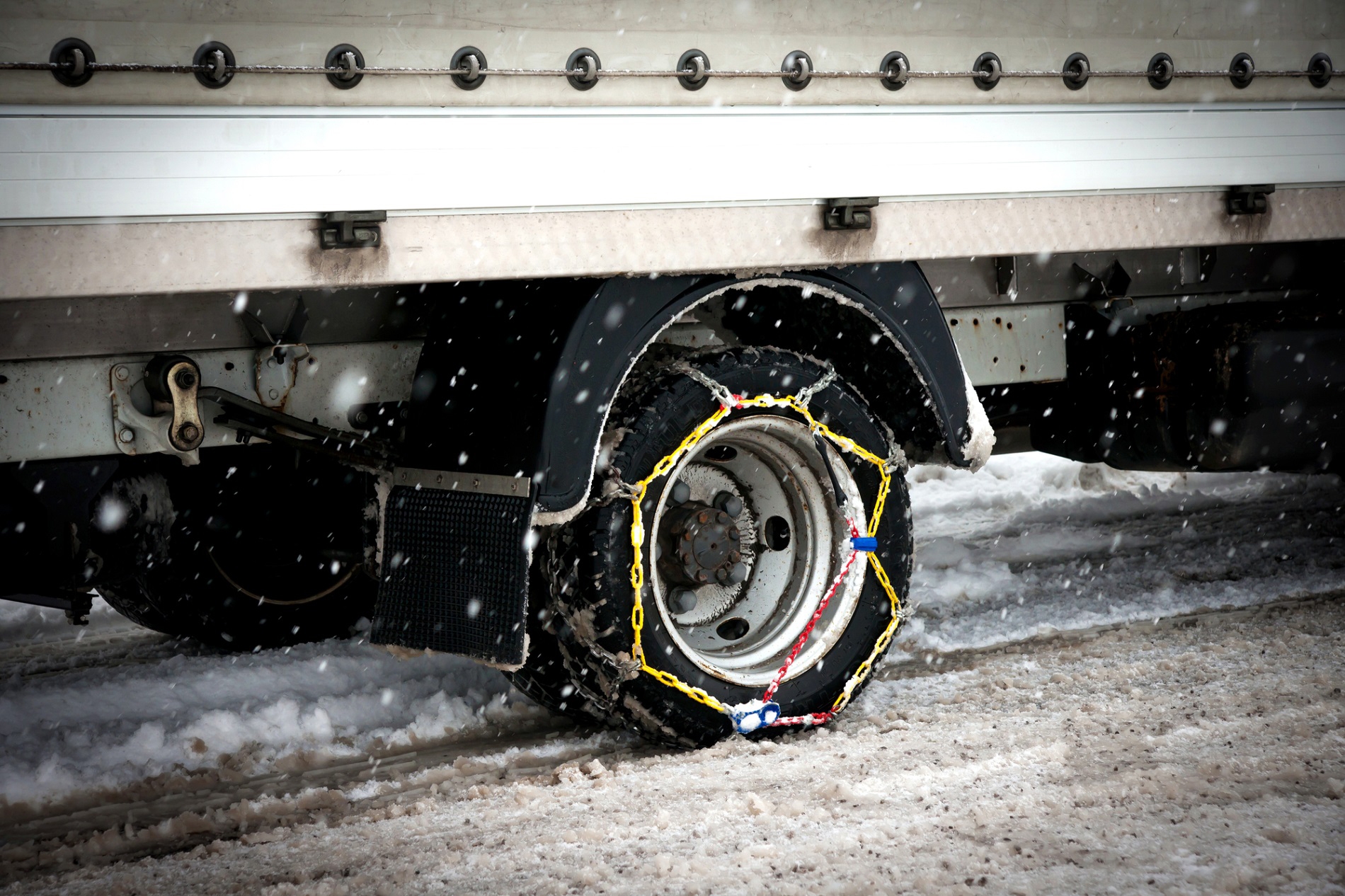
Everything You Need To Know About Tire Chains for Trucks
Winter is right around the corner, which means it’s only a matter of time before Mother Nature starts wreaking havoc on the road. While normal motorists can slap a set of all-season radials on the family SUV, preparation for inclement weather is much more difficult for truckers. One of the best precautions a driver can take is installing tire chains for trucks before precipitation starts hitting the ground. Here’s everything you need to know about these important pieces of safety equipment.
How Tire Chains Work
Ice and snow create a smooth surface on the road, which makes it difficult for a vehicle to get traction. Tire chains help to overcome this problem by cutting into the packed precipitation and providing a foothold for each wheel to grip.

The Installation Process
A tractor-trailer has 18 tires, so how many semi truck chains do you need to install? The good news is that you don’t need to outfit each wheel, but you are responsible for chaining all of your drive wheels. Here’s an easy step-by-step guide to the installation process:
- Start by laying each chain flat in front of its respective wheel with the adjustment cams outward on the outside edge of the tire.
- Once you’ve laid out and inspected each chain, roll your rig forward a few feet until it’s directly on top of the chains.
- Reach in and hook the inside clips on the chains.
- Use an adjusting wrench to tighten the cams and ensure a secure fit.
- Gain additional tension and security by hooking up bungee or tire straps across the outside of the wheel.
- Test your work by driving a short distance and inspecting each wheel for malfunctions.
When To Install and Remove Tire Chains
In many states, you’ll get an advisory from the department of transportation mandating chain installation, but you don’t have to wait for authorities to make an announcement. If you’re experiencing slippery conditions, take a proactive approach and stop to install chains. A chain is only designed for use during inclement weather and will do damage to dry roads, so stop to remove them as soon as the situation improves.
How To Drive With Chains
While tire chains will allow you to gain additional traction during icy and snowy conditions, you can’t drive normally while they’re installed. If you travel faster than 30 mph, you run the risk of chain failure, which could seriously damage your truck or other vehicles around you. Keeping your speed down might put you slightly behind schedule, but that’s better than causing an unsafe situation.
Alternatives to Chains
Chains help during inclement weather, but they do add to your vehicle’s total weight. One popular alternative is a snow sock, which is a fabric sleeve that slips over each wheel. In states where chains are required, they will not meet the mandate for truckers, which is why you should stick with traditional components.
If you absolutely don’t want to install chains on your truck’s wheels, you always have the option of pulling over and waiting for a plow to come through and clear the road. With the time it takes to install and remove a chain on each drive wheel, you may be better off calling it a night and starting fresh in the morning.
Drive Safely During Every Season
Now you know more about tire chains for trucks, you’re better prepared to navigate anything Mother Nature throws your way. No matter how safe you are on the road, it’s always important to have great coverage to protect your business in the event of an accident. At Rev Insurance, we only work with truckers, so you can trust us to meet your specific needs. To learn about liability and other plan offerings, call 1-800-347-5373 to speak with an agent today.